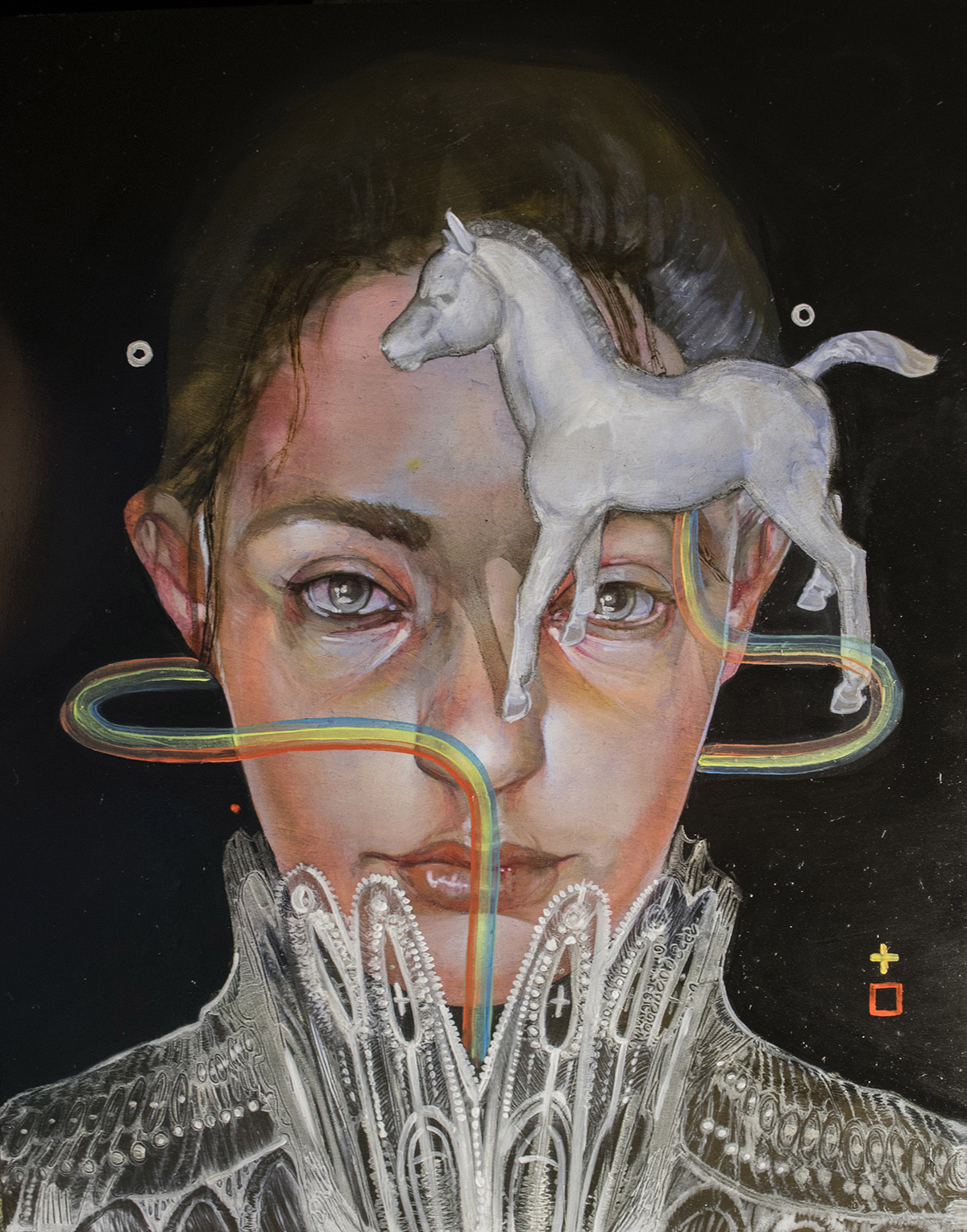
There seems to be a history running through Carmel Seymour’s water colors, but it’s hard to pin down. Somewhere in the hazy but sublime gap between art and illustration, the paintings suspend an alternate reality in the canvas’ mid-air, depicting some hyperreal folklore in a wash of negative space. Seymour’s conceit seems simple enough: she places contemporary figures, such as girls in jeans and sneakers, in some private oasis, perhaps the figures’ dream landscape or perhaps some alien planet. But the landscapes where her figures exist are not so much ‘scapes as objects; entities without a before or after. Her water colors are deployed in highly restrained and linear strokes to focus on details, and then exploded to disrupt the hyperrealism and maximize the medium’s atmospheric emphasis. The paintings have no clear beginning or end, but beg the question: what’s the story here?









 There seems to be a history running through
There seems to be a history running through  Nichole Rae Klein’s oil and egg tempera paintings blend ordinary beings and unearthly flourishes. Those timeless materials, in particular, add a tension to the artist’s scenes and portraits. The painter says her process is time consuming, but the “slowness provides me enough time to look around the scene and notice what my subject might have missed during their attempt to keep everything under control.”
Nichole Rae Klein’s oil and egg tempera paintings blend ordinary beings and unearthly flourishes. Those timeless materials, in particular, add a tension to the artist’s scenes and portraits. The painter says her process is time consuming, but the “slowness provides me enough time to look around the scene and notice what my subject might have missed during their attempt to keep everything under control.” Japanese artist
Japanese artist 
